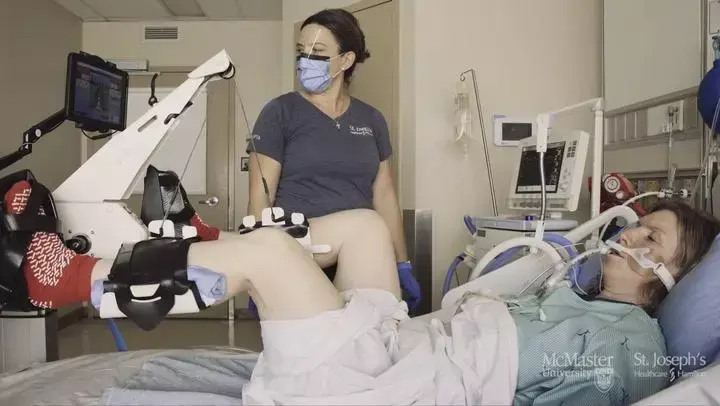- Home
- Medical news & Guidelines
- Anesthesiology
- Cardiology and CTVS
- Critical Care
- Dentistry
- Dermatology
- Diabetes and Endocrinology
- ENT
- Gastroenterology
- Medicine
- Nephrology
- Neurology
- Obstretics-Gynaecology
- Oncology
- Ophthalmology
- Orthopaedics
- Pediatrics-Neonatology
- Psychiatry
- Pulmonology
- Radiology
- Surgery
- Urology
- Laboratory Medicine
- Diet
- Nursing
- Paramedical
- Physiotherapy
- Health news
- Fact Check
- Bone Health Fact Check
- Brain Health Fact Check
- Cancer Related Fact Check
- Child Care Fact Check
- Dental and oral health fact check
- Diabetes and metabolic health fact check
- Diet and Nutrition Fact Check
- Eye and ENT Care Fact Check
- Fitness fact check
- Gut health fact check
- Heart health fact check
- Kidney health fact check
- Medical education fact check
- Men's health fact check
- Respiratory fact check
- Skin and hair care fact check
- Vaccine and Immunization fact check
- Women's health fact check
- AYUSH
- State News
- Andaman and Nicobar Islands
- Andhra Pradesh
- Arunachal Pradesh
- Assam
- Bihar
- Chandigarh
- Chattisgarh
- Dadra and Nagar Haveli
- Daman and Diu
- Delhi
- Goa
- Gujarat
- Haryana
- Himachal Pradesh
- Jammu & Kashmir
- Jharkhand
- Karnataka
- Kerala
- Ladakh
- Lakshadweep
- Madhya Pradesh
- Maharashtra
- Manipur
- Meghalaya
- Mizoram
- Nagaland
- Odisha
- Puducherry
- Punjab
- Rajasthan
- Sikkim
- Tamil Nadu
- Telangana
- Tripura
- Uttar Pradesh
- Uttrakhand
- West Bengal
- Medical Education
- Industry
LASSO-Logistic Model may Effectively Predicts Citrate Accumulation Risk in Critical CRRT Patients: Study

Researchers have developed a predictive model using LASSO-logistic regression that has demonstrated reliable accuracy in identifying the risk of citrate accumulation in critically ill patients undergoing citrate anticoagulation for CRRT, aiding early intervention and improving patient outcomes.
Acute kidney injury (AKI) is a common clinical syndrome, especially in the intensive care unit (ICU), with an incidence of more than 50% and in-hospital mortality of 30%. Continuous renal replacement therapy (CRRT) is an important supportive treatment for patients with AKI (Patel in Trauma Surg Acute Care Open e001381, 2024). Citrate is the preferred anticoagulant for critically ill patients requiring CRRT. Unfortunately, such patients may be confronted with citrate accumulation during citrate anticoagulation.
The MIMIC-IV2.2 database was used to extract data of patients undergoing CRRT who opted for citrate anticoagulation during ICU admission, including 883 critically ill patients. These 883 patients were randomized into training (n = 618) and Internal validation (n = 265) groups at a ratio of 7:3. Least Absolute Shrinkage and Selection Operator(LASSO)-logistic regression was utilized to screen the variables and construct the prediction model, followed by the plotting of the nomogram. Then, Utilizing the retrospective data from the ICU at Jiangbei Hospital in Nanjing, China, from 2014 to 2024 (n = 200) for external model validation, the model was evaluated with discriminant analysis, calibration curves, decision curve analysis, and rationality analysis. Results: A total of 883 critically ill patients undergoing CRRT were included, consisting of 542 males and 341 females, with a mean age of 65 ± 14 years. Additionally, there were 618 patients in the training set and 265 in the validation set.
A total of 47 independent variables were obtained, among which 15 independent variables were screened with LASSO regression and included in the multivariate logistic analysis. The five risk factors ultimately included in the prediction model were height, hepatic insufficiency, mechanical ventilation, prefilter replacement rate, and albumin.
The area under the receiver operating characteristic curve (ROC) of the model was 0.758 (0.701–0.816), 0.747 (0.678–0.817), and 0.714 (0.632–0.810) for the training set, internal validation set, and external validation set, respectively. The calibration curves in the training set and internal/external validation sets showed a high degree of consistency between predicted values and observed values (according to the Hosmer-Lemeshow test, the P-values were 0.7673, 0.2401, and 0.4512 for the training set, internal validation set, and external validation set, respectively). In addition, the Decision-Curve(DCA) revealed that the model had good clinical applicability. Nomo-score comparisons exhibited the rationality of the model.
The model developed based on LASSO-logistic regression can reliably predict the risk of citrate accumulation in critically ill patients with citrate anticoagulation for CRRT, providing valuable guidance for the application of early measures to prevent the occurrence of citrate accumulation and to improve the prognosis of patients.
Reference:
Hu, ZQ., Ye, ZL., Zou, H. et al. Development and validation of a prediction model for the risk of citrate accumulation in critically ill patients with citrate anticoagulation for continuous renal replacement therapy: a retrospective cohort study based on MIMIC-IV database. BMC Nephrol 26, 183 (2025). https://doi.org/10.1186/s12882-025-04106-2
Dr. Shravani Dali has completed her BDS from Pravara institute of medical sciences, loni. Following which she extensively worked in the healthcare sector for 2+ years. She has been actively involved in writing blogs in field of health and wellness. Currently she is pursuing her Masters of public health-health administration from Tata institute of social sciences. She can be contacted at editorial@medicaldialogues.in.
Dr Kamal Kant Kohli-MBBS, DTCD- a chest specialist with more than 30 years of practice and a flair for writing clinical articles, Dr Kamal Kant Kohli joined Medical Dialogues as a Chief Editor of Medical News. Besides writing articles, as an editor, he proofreads and verifies all the medical content published on Medical Dialogues including those coming from journals, studies,medical conferences,guidelines etc. Email: drkohli@medicaldialogues.in. Contact no. 011-43720751


